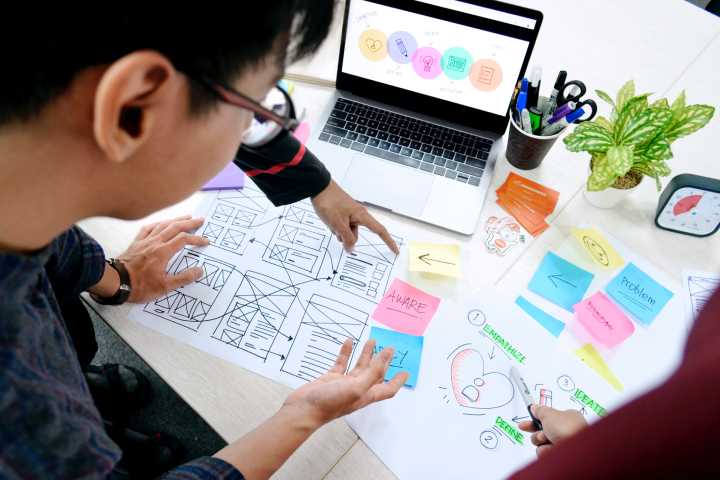Ten Keys To Improving The Employee Experience

Talent is undoubtedly the key to the proper development of a company. The reputation of the organization depends to a large extent on its well-being, as well as its productivity and results. For this reason, companies are increasingly aware of the need to ensure that their professionals have the best possible experience throughout their employment relationship. This effort has more than a positive impact on employer branding.
But how can you improve the talent experience? It is necessary to start from an organizational culture that places human value at the center so that each step forward in implementing new technologies and strategies can promote a qualitative leap in the work environment.
Table of Contents
What Is The Employee Experience?
When we talk about the employee experience in the company or organization, we refer to their perception of the company where they work. It is essential to bear in mind that it not only influences the behaviour and commitment of employees but also how the company and its employer brand are perceived outside the doors. The employee experience can impact positively and negatively, so having an adequate employee experience strategy is essential to empower and retain your workers while becoming more competitive.
Why Is The Employee Experience Necessary?
As we have already mentioned, if the employee experience is positive, workers tend to find themselves more motivated, comfortable and committed to their work tasks. It also influences the development and growth of the feeling of belonging to the organization, which translates into loyal employees. Everything mentioned above is directly reflected in their productivity. The greater motivation and commitment, the greater productivity. This turns companies that have strategies aimed exclusively at improving the experience of their employees into more profitable and competitive companies than those that do not.
How Many Elements Make Up The Employee Experience?
When designing and developing the employee experience, it is essential to identify the main elements that make it up. Once identified, it will be easier to propose a strategy that includes all those aspects that should be present to offer an optimal and satisfactory employee experience.
First, it is vital to consider and know the perceptions that employees form about the company from their first contact with it until they join and become part of it or stop working for it. You must take care of all the interaction points between the candidate, employee and company.
It is also essential to consider other factors, such as physical, cultural or technological factors, that influence the employee experience. We refer to biological factors, for example, adequate chair and desk, lighting, and temperature… It is the physical environment where workers carry out their activities. They must be environments that promote creativity and well-being, thus increasing the productivity of teams. Cultural factors align with the company’s mission, vision and objectives concerning what is expected of the employee in their job position. For example, this can be reflected in aspects such as the structure, hierarchy or leadership that make up the organization. And finally, we must also consider the technological factors becoming more critical daily. Employees must have all the necessary tools to perform their tasks correctly. Companies must be up to date with technological advances and needs that may arise as a result of these so that their employees always have the tools and facilities that these advances bring with them, such as teleworking.
Within the design of the employee experience strategy, it is interesting to contemplate the merger or combination of the traditional tasks of the HR teams with digital solutions that facilitate, for example, the performance of a more efficient satisfaction survey or the implementation of marketing—within its strategies, converting the employee experience into an experience similar to the one used to achieve an excellent and satisfactory customer experience. In most cases, the methods applied to the customer experience are replicable to work and improve the employee experience.
Employee Experience Management
The employee experience is created from the first company-candidate contact. Therefore it is essential, as an organization, to worry about carrying out adequate management of the employee experience where all the phases of the process are contemplated, from the moment the candidate sends his candidacy until he joins the company or leaves it. For this reason, strategies are launched exclusively to offer a positive and satisfactory employee experience that helps both in the short, medium and long term to retain employees and increase their motivation.
Employee Centricity
Employee Centricity is the strategy that places people at the organization’s centre. It seeks to involve, empower and motivate professionals to improve their Employee Experience and, ultimately, guarantee their well-being.
One of the prominent ambassadors of a company is its employees, which is why they play a fundamental role within them. A worker will feel more committed to the company if motivated and happy. A reciprocal commitment between the talent and the company will guarantee the best results.
From the selection to the end of the employment relationship, every day is crucial in building talent loyalty, which can only be achieved through perseverance. Employee Centricity proposes an evolution of vertical and hierarchical organizational models towards a tetrarchy that permeates each phase of the production processes from its roots.
At this point, having employee-centricity strategies not only benefits the work environment but also influences the employer branding of the company, making it a beautiful company for potential employees.
How To Establish An Employee Centricity Strategy In 10 Steps
The philosophy promoted by Employee Centricity is based on the maxim that happy employees generate happy customers. It is a strategy that raises the needs of talent to the level of the needs of clients or consumers. Prioritize their well-being and do so actively and consistently with various actions:
Actively Listen To Professionals:
Good ideas can emerge at any rung of the organizational scheme. Everyone is equally valuable, from junior talent to the most experienced in an Employee Centricity strategy. But it is necessary to listen to their contributions and attend to their expectations, interests and needs. In this way, they can be provided with the essential tools and conditions to carry out their functions and encourage their growth successfully. It is one of the fundamental steps to guarantee a psychologically healthy socio-labour environment.
Involve Talent In The Design And Development of Plans:
Employee Centricity is committed to a shift in the business organization and restructuring the traditional vertical or authoritarian leadership hierarchy. It proposes a decentralization of power in favour of professionals, who acquire greater responsibility and participation in the design and development of plans and greater autonomy. It is the so-called empowerment or empowerment of talent, which is given a new role in the company with a more playful nature, which helps make their abilities visible and increases their commitment and motivation.
Implement New Work Formulas:
Business organizations are changing, and part of that evolution is due precisely to the growing concern for the well-being of talent. The future tends towards horizontality in leadership management. An example is the Teal organization, which proposes a dynamic environment as a living organism in which talent is the critical piece and its professional fulfillment a priority objective.
Have The Collaboration Of The Managers:
The role of the business leader is transformed. He must become an active promoter of the Employee Centricity values and the person most responsible for achieving the optimal work environment. The “boss” mentality gives way to that of GeFe, a happiness manager who knows the needs of his talent and collaborates with his hand in hand to meet the objectives set together.
Gain Agility And Flexibility:
Adapting to changes is essential in a competitive market where falling behind means losing opportunities. New technologies, professional profiles and work methods are making their way to streamline production processes without losing the quality of the results. With a marked Employee, Centricity character stands for the Agile philosophy, which places people at the centre. They are the ones who can assess and decide the paths to follow based on the results that are being obtained.
Take Care Of The Relationship With Employees And Collaborators In All Its Phases:
In an environment where people are the centre of the strategy, there is no room for unhealthy competition or distancing between teams. Communication and a good relationship between professionals are crucial to fostering a pleasant and productive work environment. Techniques such as Team Building or Bridge Building pursue improving labour relations while transversal solutions are achieved to the different situations that may arise.
On the part of the leaders of an organization, there must also be a dialogue and a concern for the well-being of talent, from their onboarding to their dismissal. A high quality of interpersonal relationships between teams and leaders guarantees a pleasant work experience and, consequently, a positive perception of the company as a work environment.
Design Personalized Talent Plans Adapted To The Needs Of Each Professional:
Each professional can have different skills, expectations and needs, so trying to offer the best possible work experience implies acting from that individuality. In an Employee Centricity strategy, the action plan gives the professional the same prominence as the client. Defining the different “Employee Persona” targets can be helpful for planning and generating special moments adapted to each profile, called “wow moments”.
More personalized is the new Human Resources Employee Journey Map tool, which analyzes the journey of each professional to identify all the positive and negative impacts the company may have on them to eliminate obstacles and encourage their well-being. From recognition to a training or career plan, numerous incentives contribute to achieving the optimal experience.
Take Advantage Of The Benefits of Technology:
The progressive digitization of companies in all sectors, not just technology, has become a great ally in the search for success. Technological solutions become a tool that, in addition to accelerating production processes, facilitates the work of professionals and allows them to meet their needs in a personalized way. Teleworking is one of the possibilities, especially in highly digitized sectors, which offers greater autonomy and freedom to the professional.
Promote Innovation In The Field Of HR:
In configuring the best possible work environment, Human Resources departments must become much more than a team dedicated to selecting and promoting candidates. The key lies in committing to new methodologies focused on designing more engaging and motivating experiences for talent, such as Design Thinking.
Use Marketing As a Reference:
In the same way, marketing pursues the attraction of clients, its strategies applied to Human Resources become an ideal tool to attract talent and implement processes and methodologies that contribute to knowing, personalizing and improving their experience.
